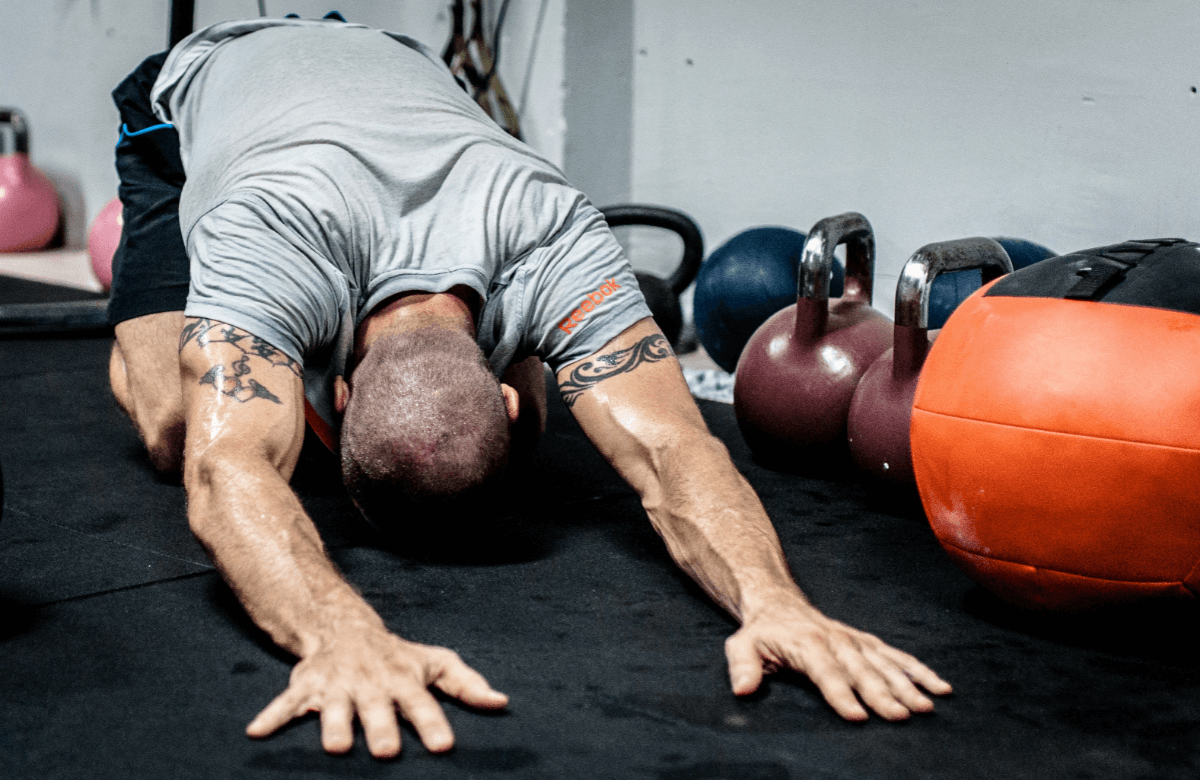Lower back pain, a common complaint among individuals of all ages and walks of life, can disrupt daily activities and hinder overall well-being. Whether you’re an avid athlete, desk-bound professional, or dedicated homemaker, the persistent discomfort of lower back pain can have a profound impact on your quality of life. Fortunately, there exists a practical and holistic approach to alleviate this distress and mitigate the risk of future injuries: the incorporation of a systematic regimen of lower back stretches into your daily routine. In this comprehensive guide, we will delve deeply into 13 detailed and highly effective stretches, each designed to specifically target lower back pain, enhance flexibility, and promote optimal back health.
Exercises To Stretch Your Back
Here are the 13 best exercises to stretch your back :
Child’s Pose
Commence in a kneeling position, then gracefully shift your weight backward, settling onto your heels while simultaneously extending your arms forward and gently lowering your forehead to the ground. This stretch not only confers a profound elongation of the spinal column but also serves to release pent-up tension in the lower back region.
Knee-to-chest stretch
Lying supine with your legs extended, draw one knee toward your chest, cradling it in both hands. Hold each leg in this position for a generous span of 20 to 30 seconds, allowing the stretch to work its magic.
Piriformis stretch
Assume a seated posture with one leg crossed over the other, then gently and purposefully draw the knee of the crossed leg toward your chest. This stretch is particularly adept at targeting the piriformis muscle, notorious for its role in contributing to lower back discomfort when it becomes excessively taut.
Seated spinal twist
Sit with your legs fully extended in front of you, bend one knee, and cross it over the other leg. Execute a deliberate twist of your torso in the opposite direction, employing your arm to intensify the stretch. This exercise, is favorited by its ability to enhance spinal mobility, eradicating stiffness from the lower back, and reducing the likelihood of future back injuries.
Pelvic tilt
Start this one on your back, knees bent, and feet planted firmly on the floor. Engage your abdominal muscles with precision, guiding your lower back to press gently into the ground before releasing. This maneuver serves the dual purpose of fortifying your core while stabilizing the lower back—a harmonious blend of strength and support.
Cat-Cow
Begin this exercise on all fours, alternately arching your back akin to a feline and surrendering your belly to the earth like a cow. This dynamic, fluid stretch serves to enhance spinal flexibility, alleviate tension, and nurture an expansive range of motion within the back.
Sphinx stretch
Assume a prone position with your forearms serving as pillars of support as you elevate your chest while your hips maintain a steadfast connection with the ground below. Hold for a at least 20 seconds before moving on to a new stretch.
Supine Twist Back Stretch
Lying supine with your knees flexed, allow them to gracefully cascade to one side, ensuring your shoulders remain anchored to the earth and feel the stretch.
Prone Bridging Back Stretch
Position yourself on your stomach, propelling your upper body onto your elbows, creating an arch in your upper back as slowly as possible and hold for at least 20 seconds.
Supine Abdominal Draw-In Back Stretch
Lying on your back, knees bent, and feet planted firmly, meticulously draw your belly button toward your spine, all while maintaining the pristine neutrality of your spine. This disciplined exercise fortifies the core, extends support to the lower back, and, by extension, minimizes the risk of injuries.
Supine Butt Lift Back Stretch
In supine repose with knees bent and feet anchored firmly to the floor, embark upon a graceful elevation of your hips, engaging your gluteal and lower back musculature with precision. This practice bolsters lower back stability while simultaneously nurturing a resilient lower back.

Seated Forward Curl Back Stretch
Seated with legs extended, progressively round your back as you tenderly reach for your toes. In this poised posture, you liberate the tension concealed within the hamstrings and the lower back, ushering in a realm of enhanced flexibility and less strain.
Side Stretch
Assume a standing stance with your feet separated hip-width and elevating one arm overhead while executing a gentle lateral bend. This stretch unfolds the muscular bands flanking the torso and lower back to the relax the entire back region.
Should I Stretch My Lower Back If It Hurts?
Stretching, while an effective means to alleviate lower back pain for many, must be approached with prudence if you are currently experiencing discomfort. If you are suffering from acute pain or harbor an underlying medical condition, it is important to seek counsel from a healthcare professional before taking on these stretches.

Warming Up Your Muscles
Prior to stretching, it is imperative to start your routine with a requisite warm-up regimen. Light aerobic exercises, such as brisk walking or cycling, are instrumental in amplifying blood circulation, priming your muscles for the forthcoming stretching endeavors. Additionally, integrating dynamic stretches—such as leg swings or arm circles—into your warm-up routine can further fortify your body for static stretches.
When To Stop
During the course of stretching, your body’s communication becomes paramount. If you encounter sharp or escalating pain, your body is signaling that an adjustment is necessary. In such instances, it is imperative to cease the stretching immediately. If you persistently experience lower back pain during or after stretching, the next course of action is to seek consultation from a healthcare professional for a comprehensive evaluation.
With that said, incorporating these 13 detailed lower back stretches into your daily regimen will undoubtedly yield an array of benefits, including pain alleviation, heightened flexibility, and reduced susceptibility to injuries. Always remain attentive to your body’s signals, initiate your stretching journey gradually, and, for those grappling with severe or chronic lower back issues, do not hesitate to solicit the guidance of a healthcare professional. By nurturing your lower back, you can unequivocally elevate your overall well-being and relish in the luxuries of a more comfortable, active, and pain-free lifestyle.














